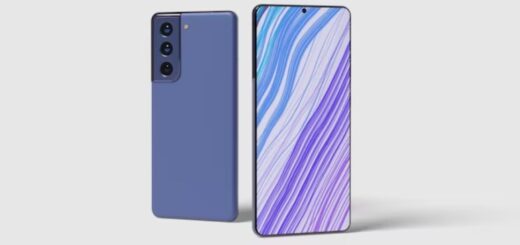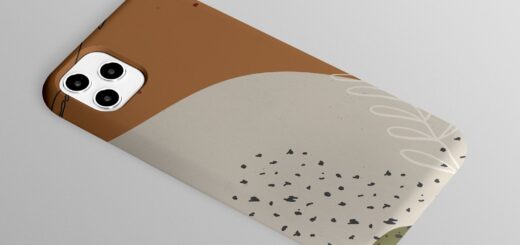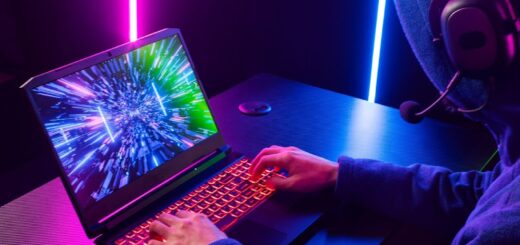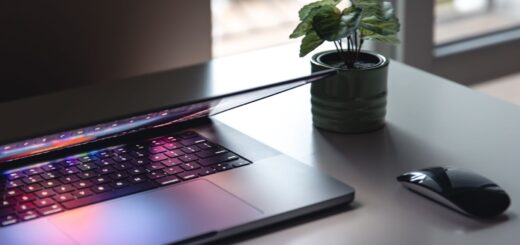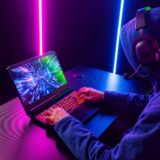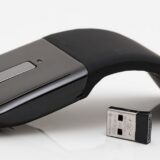“No Signal On Monitor” Issue: 13 Effective Solutions
If your monitor is showing a ‘no signal’ message despite turning on the CPU, it means that the monitor isn’t receiving the signal from the source, which is the CPU.
On this page, you’ll discover the reasons behind the ‘no signal’ issue on your monitor and effective solutions to address it. I’ve personally encountered all the problems I’m going to outline here, so these fixes should be beneficial for resolving similar issues on your PC.
The cable might not be properly connected to the monitor, causing it to not receive the signal from the computer or CPU. So, without further delay, let’s delve into the details.
Opt for the Right Input Source to Receive Signals
One of the initial and straightforward errors involves not selecting the appropriate mode on your monitor. For instance, if you’ve connected your CPU and monitor via an HDMI cable, but the monitor is searching for signals from DVI, VGA, or other ports instead of HDMI.
In this scenario, even if both the monitor and the CPU are functioning properly, the monitor won’t receive signals from the CPU due to the incorrect signal path.
Solution:
- You can effortlessly rectify this problem by navigating to the monitor’s menu using the buttons on the monitor itself. Within the menu, choose the ‘Input Source’ option and then select the correct port that you’ve connected to.
- Opt for the suitable input source on your monitor. If unsure, opt for ‘Auto Select.’
- Simply opt for the ‘Auto Select’ option. This way, the monitor will automatically detect and receive signals from the active port. As shown in the settings menu of my Dell U2412M monitor, these settings might differ depending on your monitor model. Refer to various methods to identify your monitor’s brand, model, and specifications.
Still encountering signal issues? Proceed to the following step.
Ensuring Secure Cable Connection for Uninterrupted Signals
Are you certain about the cable connection? It’s a vital consideration, as loose connections can disrupt the smooth transmission of signals from the source (CPU) to the recipient (monitor).
Solution:
- Address a potential loose connection by unplugging and reinserting the cable at both ends. If a loose connection is causing the issue, this remedy should resolve it.
- Even after checking the cable, if the monitor still exhibits the same problem, there’s no need to be concerned. Continue reading to identify the underlying issue and its corresponding solution.
Ensuring Proper Graphics Processing: The Role of a GPU
Integrated graphics on certain motherboards can function without an external graphics card. However, not all motherboards possess integrated graphics memory capabilities. In scenarios where integrated graphics are absent, an external graphics card becomes essential for your PC.
If your PC lacks a GPU and the motherboard lacks integrated graphics memory, the monitor won’t receive the correct signals from the motherboard, leading to the ‘No Signal’ issue.
Solution:
- In such instances, acquiring a dedicated graphics card for your PC is essential to transmit signals to your monitor effectively.
- You can conveniently purchase a suitable GPU from platforms like Amazon.
- Ensure compatibility between the GPU and your motherboard before making a purchase.
Choosing the Correct Port: GPU Over Motherboard
When your PC has a dedicated graphics card and your monitor fails to function, it’s crucial to examine the cable’s pathway.
Take a moment to confirm whether you’ve connected the cable from the motherboard to the monitor or from the GPU to the monitor.
Solution:
- If you’ve inadvertently connected the cable from the motherboard to the monitor, redirect the cable to connect the GPU to the monitor instead.
- Ensure compatibility between the monitor and the GPU, verifying that they share the same type of ports.
- If not, you might require adapters such as HDMI to DisplayPort or DisplayPort to HDMI to establish the connection.
Ensuring Accurate Front Panel Connector Connections
Improperly connecting the power pin connectors can result in a ‘No Signal’ issue displaying on your monitor screen. These connectors are small and it’s easy to become bewildered during the setup process.
Improperly connecting power pins is a frequent mistake encountered when building a PC.
Solution:
- Carefully review your motherboard’s manual to accurately identify the appropriate connectors for the front panel, including power pins, reset buttons, and other control components.
- Refer to the manual’s diagrams and instructions to ensure each connector is securely attached to the corresponding pins on the motherboard.
Explaining PC Front Panel Connectors
Ensure Proper Placement of RAM Modules on Your Motherboard
Alt: hands over the ram module and other details on the white desk
It’s not uncommon to overlook a crucial step while assembling your PC. During the PC building process, it’s possible to forget about placing the RAM modules onto the motherboard. If you’re facing this issue, you’re not alone.
Improper installation of RAM can also lead to the ‘No Signal’ problem. Additionally, if you’re unable to access the BIOS on your PC, improper RAM installation might be one of the underlying causes. It’s worth exploring other factors that could affect your PC’s BIOS booting process.
Solution:
- Start by double-checking whether you’ve inserted the RAM sticks onto the motherboard;
- If you’ve inadvertently missed this step, insert the RAM sticks into their respective slots;
- If you’ve already inserted the RAM but are still encountering the issue, consider removing the RAM module from the slot and then reseating it properly;
- Make sure the RAM is firmly and correctly positioned in its designated slot.
Resolving Compatibility Issues with GPUs
A computer’s motherboard is designed to accommodate specific components that are deemed compatible. Using incompatible components can result in wastage of both time and money.
For instance, if your motherboard supports DDR3 GPUs and you attempt to run your PC with a DDR4 GPU, you’re essentially dealing with an incompatible component. This mismatch between the motherboard and the graphics card can lead to an ‘no signal’ error, as they are unable to synchronize and generate the necessary signals to operate the computer effectively. To identify suitable components for your PC, it’s crucial to determine your motherboard model.
Solution:
- When acquiring PC components, ensure that they are compatible with your motherboard. Always verify compatibility before making a purchase;
- If you encounter a compatibility issue with your GPU, the solution involves replacing the incompatible GPU with a compatible one;
- Refer to your motherboard’s manual to identify the components that are compatible with your computer’s setup;
- By selecting components that align with your motherboard’s specifications, you can avoid ‘no signal’ errors and ensure optimal system performance.
Reinserting the Graphics Card for Signal Resolution
Incorrectly installing a graphics card can lead to a ‘No Signal’ error on your computer. If you’re confident in the compatibility of your PC components, the next step is to ensure the proper installation of the graphics card.
Solution:
- A straightforward solution to address this issue is to eject the graphics card from its slot and then carefully reinsert it into the appropriate slot on your PC.
Use the Reset button on your CPU
Encountering the persistent ‘No Signal’ error despite ensuring proper compatibility and correct installation of your PC components can be frustrating. Fortunately, there’s a solution that might help address this situation.
Solution:
- In instances where your computer struggles to recognize recent changes or configurations, utilizing the ‘Restart’ button on your CPU case can prove beneficial;
- This button, often located alongside the power button, can initiate a system restart that might help resolve the ‘No Signal’ issue;
- To apply this fix, first, close any open applications on your computer. Then, press the ‘Restart’ button on the CPU case;
- In many cases, performing a restart can successfully alleviate these types of problems and restore the desired functionality to your system.
Is Your Converter Operating Correctly?
Are you employing a signal converter to facilitate communication between your GPU and monitor?
A converter is essentially an electronic device designed to modify the signals transmitted from the source (GPU or motherboard) to match the specifications of your monitor. The market offers a variety of converters, such as HDMI to VGA, DisplayPort to HDMI, and more.
In situations where you are using a converter, it’s crucial to assess its functionality.
For instance, if your GPU features an HDMI port that you’re currently utilizing, but your monitor utilizes a DisplayPort, you might acquire a converter to establish the connection. However, encountering a ‘No Signal’ issue upon attempting to start your PC could arise in this scenario.
It’s important to ensure that you’ve chosen the appropriate converter. For instance, if you’re utilizing a display to HDMI converter but actually require an HDMI to DisplayPort converter, the mismatch could lead to the ‘No Signal’ error.
Solution:
- Should you find that you’ve used an incompatible converter, the solution lies in obtaining a new converter that aligns with the specifications of your PC components.
Exploring Alternative Ports for a Solution
There might be instances where your monitor remains unresponsive even with the appropriate converter in use.
In such cases, it’s essential to investigate the underlying issue.
The problem could potentially stem from a damaged port, either on the source side (GPU or motherboard) or the monitor itself. When the pins within a port become compromised, it can result in signal disruption, leading to the ‘No Signal’ error.
Solution:
- Before contemplating the replacement of major components like your GPU, motherboard, or monitor, it’s advisable to ascertain the precise issue;
- Should the problem be isolated to a specific port, consider yourself fortunate as there’s an alternative remedy. Utilize another available port – be it Display, VGA, or a different option – to see if the issue persists.
However, if switching to an alternate port fails to yield results, it may indicate a more substantial problem requiring the replacement of the specific PC component involved.
Testing Different Source Connections

When you’re facing issues and considering component replacements, it’s crucial to identify the specific problem area. Is it the monitor or the GPU that’s potentially causing the trouble?
To determine this, an effective approach involves connecting your monitor to an alternative source and your CPU to a different monitor.
Let’s delve into the process. First, let’s focus on assessing your monitor’s condition.
Solution:
- Begin by connecting your monitor to an alternative source, such as a local television network or another compatible device, using the appropriate cable;
- If you have access to a laptop, connect it to your monitor as well;
- Should the monitor function as expected and display content correctly, it indicates that your monitor is in good working condition;
- However, if the issue persists and the monitor fails to display content correctly, it’s likely time to consider a replacement for the monitor itself.
Verify GPU Functionality: Test Using Another Monitor
With the monitor confirmed to be functioning correctly, the next step is to determine if your CPU is effectively transmitting data to the monitor.
For this assessment, you’ll need to employ a different monitor.
Solution:
- Connect your PC to an alternative monitor using a standard cable and compatible port;
- If the new monitor also displays a ‘No signal’ message, it’s a sign that your GPU may be faulty and a replacement might be necessary;
- In cases where the GPU is functioning as expected, proceed to enter your PC’s lock screen password.
Conclusion
Are you considering making a purchase to resolve the problem? Take a moment to pause and explore other potential issues before committing to buying anything. I advise against making unnecessary purchases, so take some time to contemplate.

